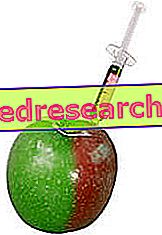
What is Tasigna?
Tasigna is a medicine that contains the active substance nilotinib. The medicine is available in light yellow capsules (200 mg).
What is Tasigna used for?
Tasigna is used to treat adults with chronic myelogenous leukemia (CML), a type of white blood cell cancer in which granulocytes (a class of white blood cells) begin to grow out of control. It is used when the patient is a "Philadelphia positive chromosome" (Ph +), which means that some of the patient's genes have reorganized to form a special chromosome, called the Philadelphia chromosome, which produces an enzyme that leads to the development of leukemia.
Tasigna is used in the "chronic" and "accelerated" phase of the CML. No information is available on the efficacy in patients in whom the disease is in "blast crisis" (another phase of CML).
Tasigna is used in patients who are intolerant or resistant to other treatments, including those with imatinib (another anticancer medicine), or when their disease does not respond to the above treatments.
Because the number of patients with CML is low, the disease is considered "rare" and Tasigna was designated an "orphan medicine" (a medicine used in rare diseases) on 22 May 2006.
The medicine can only be obtained with a prescription.
How is Tasigna used?
Treatment with Tasigna should be started by a doctor experienced in the diagnosis and treatment of chronic myelogenous leukemia. The recommended dose is two capsules twice a day, until the patient reports benefits. The dose should be reduced or treatment stopped if the patient has certain undesirable effects on the blood.
The two doses must be taken with about 12 hours of waste. The capsules are swallowed whole with a glass of water, fasting two hours before and one hour after each dose. Where necessary, Tasigna can be given together with certain other medicines. It should be used with caution in patients with severe liver or heart problems. For more details, see the summary of product characteristics (also included with the EPAR).
How does Tasigna work?
Nilotinib, the active substance in Tasigna, belongs to a class of medicines called protein kinase inhibitors. These compounds act by inhibiting a class of enzymes known as
protein kinase. Nilotinib works by blocking the protein kinase called "BCR-ABL" kinase. This enzyme is produced by leukemic cells, which causes it to proliferate uncontrollably. By blocking the Bcr-Abl kinase, Tasigna helps to control the expansion of leukemia cells.
How has Tasigna been studied?
The effects of Tasigna were first tested in experimental models before being studied in humans.
Effective Tasigna was examined in two main studies involving a total of 439 CML patients who did not tolerate imatib or whose disease did not respond to treatment with this drug. Tasigna has not been compared with any other treatment.
The first study included a total of 320 patients whose disease was in "chronic phase", three-quarters of whom no longer responded to imatinib. The main measure of effectiveness was the percentage of patients who had a "major cytogenetic response" (the percentage of white blood cells of patients who contained the Philadelphia chromosome had fallen below 35%). The second study included a total of 119 patients whose disease was "accelerated", the four fifths of whom no longer responded to imatinib. His main measure of effectiveness was the percentage of patients who had a "hematology response" (a return to the normal percentage of white blood cells).
What benefit has Tasigna shown during the studies?
In the chronic phase CML study, 156 (49%) of the 320 patients had a significant cytogenetic response, after taking Tasigna for 341 days on average (about eleven months). In the accelerated phase CML study, 50 (42%) of the 119 patients had a significant haematological response, after taking Tasigna for 202 days on average (about seven months). In both studies, Tasigna had a similar effect in both patients who did not tolerate imatinib and those in whom the disease no longer responded to this drug.
What is the risk associated with Tasigna?
The most common side effects caused by Tasigna (seen in more than one patient in 10) are thrombocytopenia (low number in platelet count), neutropenia (low number in white blood cell count), anemia (low number in red blood cell count), headache, nausea, constipation, diarrhea, rash, itching, fatigue (fatigue) and increased levels of lipase in the blood (an enzyme produced by the pancreas). For the full list of all side effects reported with Tasigna, see the Package Leaflet.
Tasigna should not be used by people who may be hypersensitive (allergic) to nilotilib or to any of the other ingredients (components).
Why has Tasigna been approved?
The Committee for Medicinal Products for Human Use (CHMP) concludes that, although it has not been compared to any other treatment, the efficacy of Tasigna has been sufficiently demonstrated and was comparable to that of other drugs of the same class. The Committee decided that Tasigna's benefits are greater than the risks for the treatment of adults in chronic and accelerated phase of Philadelphia chromosome-positive CML with resistance or intolerance to a previous therapy including imatinib. The Committee recommended that Tasigna be given marketing authorization.
What measures have been taken to ensure the safe use of Tasigna?
The company that produces Tasigna will provide an information pack in each Member State to the doctors and pharmacists who prescribe or distribute the drug. This package will remind them how to safely use Tasigna in patients.
More information on Tasigna
On 19 November 2007, the European Commission issued a marketing authorization valid for Tasigna, valid throughout the European Union, to Novartis Europharm Limited.
For a summary of the opinion of the Committee for Orphan Medicinal Products on Tasigna, click here.
The full EPAR for Tasigna can be found here.
Last update of this summary: 05-2009



